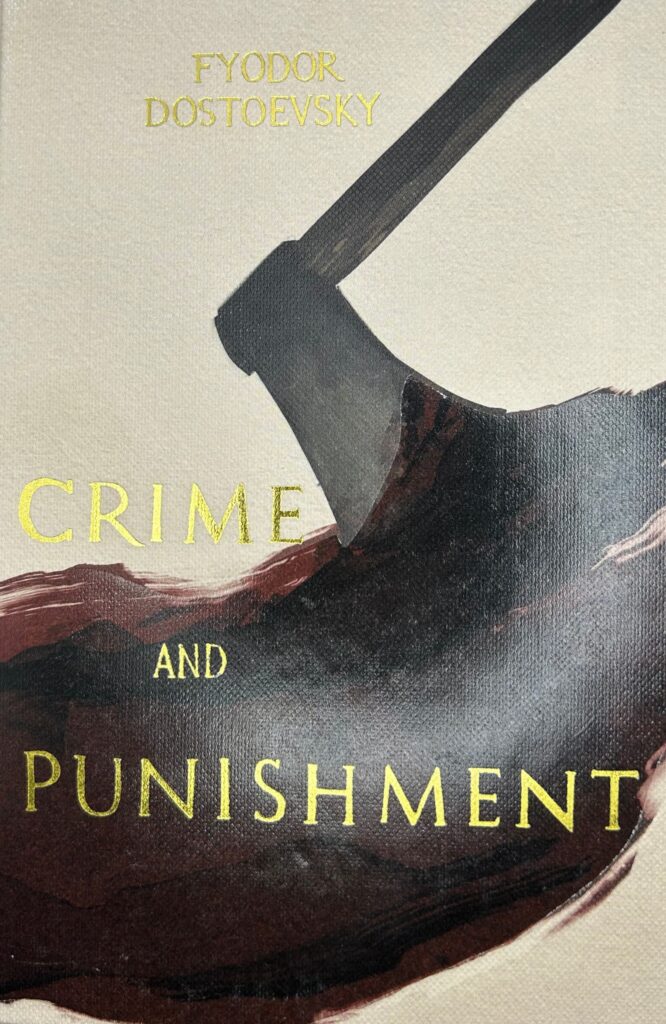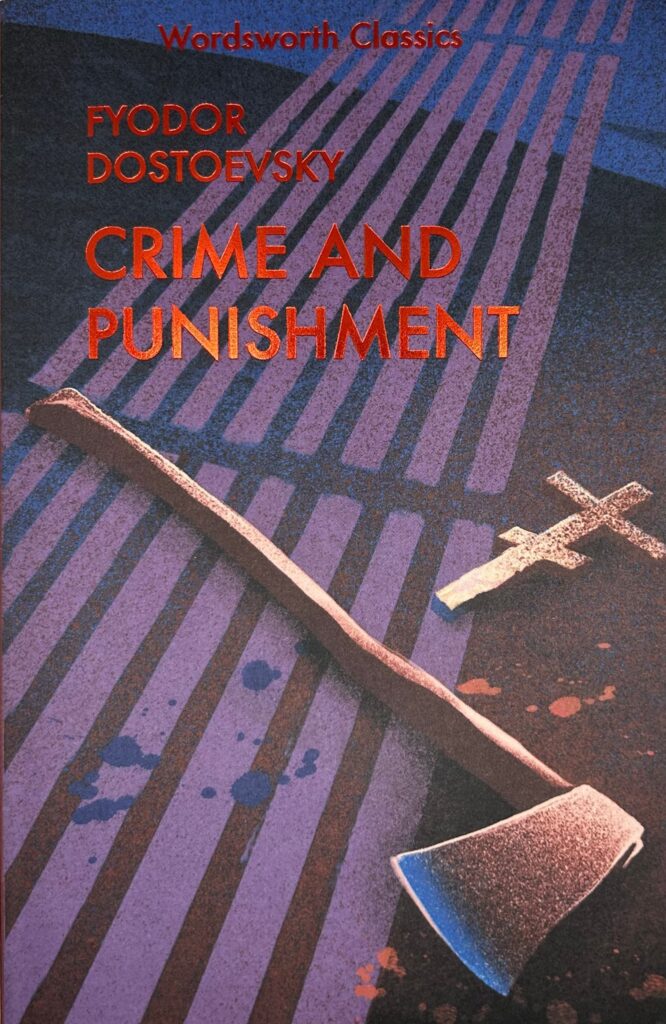
David Stuart Davies looks at Crime and Punishment
David Stuart Davies looks at Crime and Punishment. The first, and perhaps the finest, of Dostoevsky’s great novels.
‘Though Crime and Punishment is sometimes cited as the first psychological thriller, its scope reaches far beyond Raskolnikov’s inner turmoil. From dark taverns, dilapidated apartments and claustrophobic police stations, the underbelly of 19th century St Petersburg is brought to life by Dostoevsky’s searing prose.’ Alex Gendler
It’s a big book. It’s a famous book. But have you read it? If not, you should. Devouring it is a remarkable experience. As with all great literature, the setting and the period are not as important as the ideas, dilemmas and richness of the characters featured in the narrative which speak to each generation and have a timeless universality to them. As one critic observed, ‘the book illuminates the eternal conflicts of the human heart’.
Before we go any further, let us deal with a few facts. Crime and Punishment was written by Fyodor Dostoevsky (1821-1881) and was published in 1866. Dostoevsky was a respected and celebrated novelist, short story writer, essayist, journalist and philosopher. His literary works explore human psychology in the troubled political, social, and spiritual atmospheres of 19th-century Russia and yet they have resonances for all irrespective of time or location. Dostoevsky has many great books to his name including The House of the Dead (1862), The Idiot, (1869), and The Brothers Karamazov (1880). However, Crime and Punishment is regarded as his masterpiece.
The central character in the novel is Rodion Raskolnikov, an impoverished law student living in St Petersburg. So desperate is he for money that he devises a plan to kill an aged female pawnbroker. He sees her as a cruel and unscrupulous creature and he intends to take her horde of money. This, he believes, will release him from the chains of penury and allow him the ease and freedom which will bring him to greatness. He convinces himself that it is justifiable to kill the old woman on the grounds that she is a parasite, an evil in society. He believes that his superior intelligence allows him to transcend moral taboos. The desire to commit this crime and facilitate his escape from his miserable life becomes an obsession. In desperation, he steals an axe and gains access to the old lady’s apartment by pretending that he has an item to pawn. Once there he attacks her with the axe, ending her life. He also kills her half-sister, Lizaveta, who happens to stumble upon the scene of the crime. Shaken by his actions, he only manages to steal a handful of items and a small purse, leaving much of the pawnbroker’s wealth untouched. Due to sheer good fortune, he manages to escape the building and return to his room undetected.
Once he has committed the crime of the title – a double murder – and now he must suffer the punishment. However, it is not punishment of the official type. It is not arrest and incarceration that awaits Raskolnikov but mental torture. After the terrible deed has been done he comes not only to realise that his dream of freedom and worldly success was built on shifting sand but also, to his surprise, he finds himself racked with confusion, paranoia, and disgust for what he has done. His moral justifications for murdering the old woman disintegrate completely as he struggles with guilt and horror and is forced to confront the real-world consequences of his deed.
The novel follows the course of his slow breakdown under the pressure of remorse. His crumbling mental state causes him to behave in an eccentric and suspicious manner. At this point in his life, he enters into a prolonged intellectual game of cat and mouse with Inspector Porfiry Petrovitch with whom he first encounters in a social context. Petrovitch is the head of the Investigation Department in charge of solving the murders of the pawnbroker and her sister and is convinced of Raskolnikov’s guilt.
The battle of wits between these two is one of the riveting suspenseful aspects of the novel. They circle each other like feral animals. Petrovitch is determined to elicit a confession from Raskolnikov and attempts this through psychological means, seeking to confuse and provoke the volatile murderer into giving the game away.
Dostoevsky conceived the idea of Crime and Punishment, prompted by the case of Pierre François Lacenaire, in the summer of 1865. Lacenaire was a thief and had committed a double murder in the course of his nefarious activities. During his trial, he fiercely defended his crimes as a valid protest against social injustice. He turned the judicial proceedings into a theatrical event. He made a lasting impression upon French society and upon several writers, including Dostoevsky.
There have been over 25 film adaptations of Crime and Punishment. The most notable include a silent version in 1923 directed in Germany by the great Robert Weine, famous for The Cabinet of Dr Caligari. In 1935 an American adaptation appeared featuring a creepy performance by Peter Lorre as Raskolnikov. More recently, in 2002, there was a movie with Crispin Glover and John Hurt as the protagonists. While sticking closely to the plot, this version moved the time frame to the early years of the twentieth century. Also in 2002, there was a TV movie starring John Simm as Raskolnikov and Ian McDiarmid as Porfiry Petrovich.
No doubt we shall not have to wait too long before a new version of the novel emerges. However, it is interesting to note that the director Alfred Hitchcock, the master of the suspenseful crime movie, stated in an interview with French filmmaker Francois Truffaut that he would never consider filming Crime and Punishment. Hitchcock explained that he could certainly make a great film out of a good book, and even (or especially) out of a mediocre book, but never a great book because the film would always suffer by comparison. One could never quite capture that greatness on celluloid.
Image: Shutterstock.com
Books associated with this article

Crime and Punishment (Collector’s Edition)
Fyodor Dostoevsky
